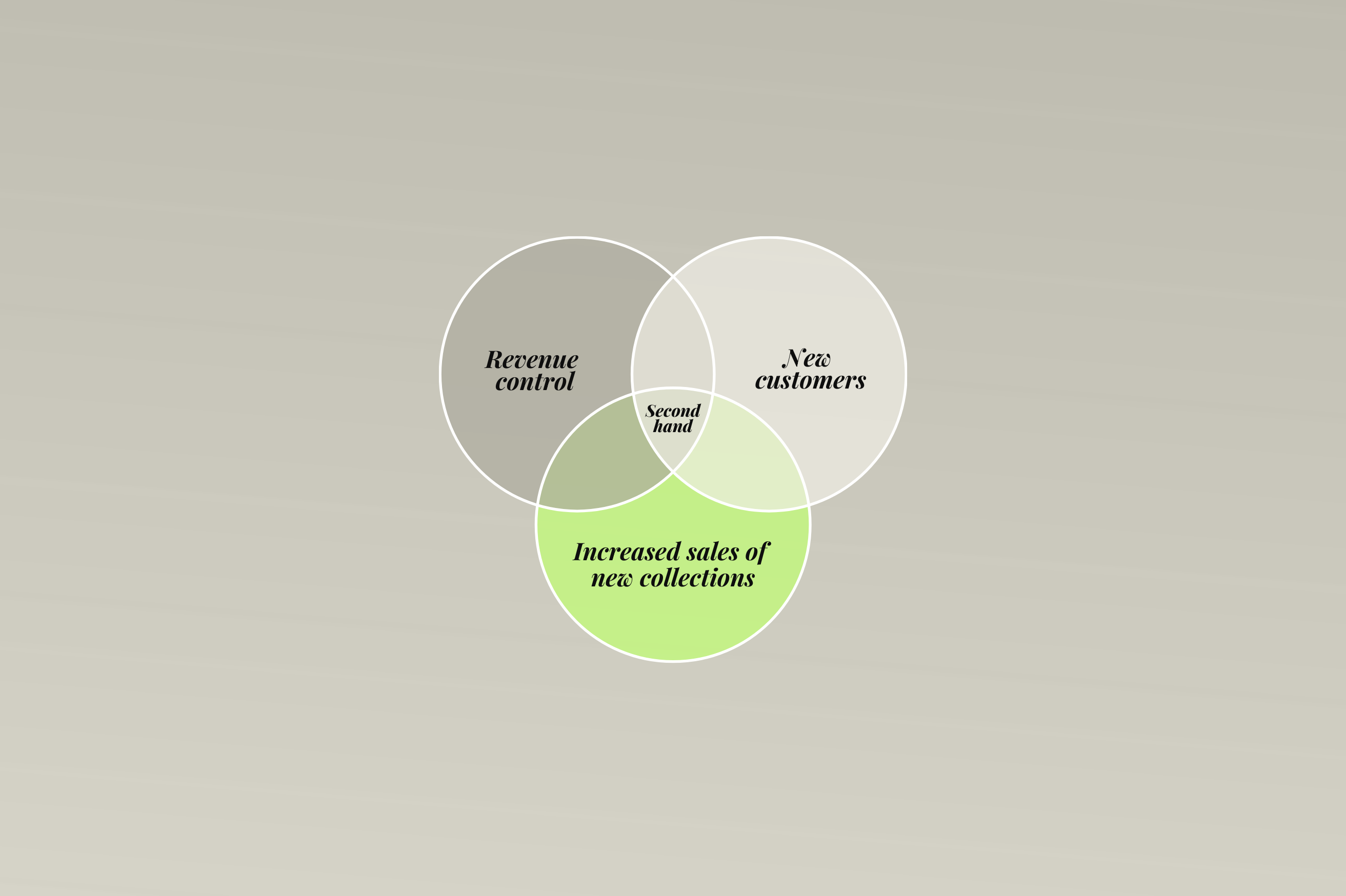When resale reshapes the rules of e-merchandising
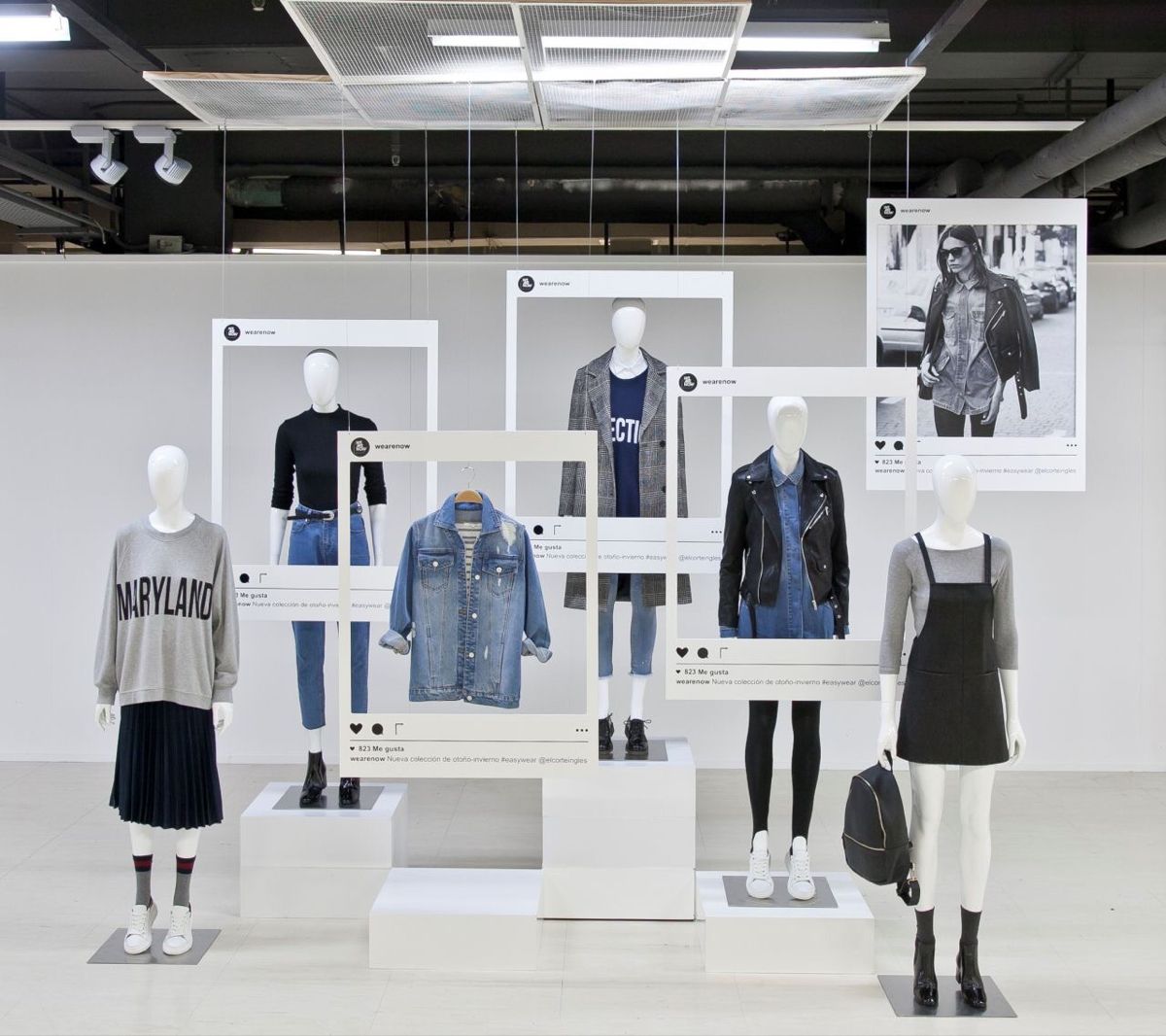
As resale platforms multiply unique references, fashion brands are facing a new challenge: how to recreate fluidity within a discontinuous inventory? From intelligent search engines to dynamic re-ranking and conversational AI, the future of the e-commerce storefront may lie far beyond traditional category pages.

The single-stock dilemma
Vinted now counts more than 100 million users across Europe, while Vestiaire Collective surpassed €1 billion in GMV in 2023. The numbers speak to the scale of demand. Yet behind this growth lies a paradox: the user experience remains fragile, because each item exists in only one unit.
In traditional e-commerce, collections rely on multiplied SKUs across sizes and colors. A flagship dress comes in six sizes and three shades. In resale, that same dress appears only once, in a single size, sometimes with a flaw. The result: a high probability of frustration.
On monobrand sites such as Sandro Seconde Main or Isabel Marant Vintage, users often arrive with a precise search in mind (“black dress in size 38,” “leather jacket”). But the inventory cannot guarantee depth, and the journey can end in a dead end.
Conversely, on multibrand platforms such as Vinted or The RealReal, the offer is vast, with millions of pieces available in real time. Yet this abundance creates its own complexity: without optimized search, isolating the relevant item quickly becomes a challenge.
Search, the real battleground
A Baymard Institute study reveals that 42% of e-commerce sites suffer from underperforming internal search, and that up to 70% of cart abandonments are tied to unsatisfactory search experiences.
In resale, where catalogs are fragmented, this weakness becomes fatal. The quality of product metadata (size, material, color, condition) turns critical. A single misattributed detail can make an item disappear from view.
User behaviors reflect this reality. Direct search dominates, with keyword queries like “oversized coat” or “Nike sneakers size 9,” which require rigorous indexing. Exploratory browsing remains frequent too: users scroll, filter by price or color, compare. Yet in a discontinuous stock, traditional filters quickly hit their limits, how do you sort by “new arrivals” when every piece is unique and never comes back?
Without intelligent search, the risk is twofold: immediate lost sales and long-term erosion of customer satisfaction.
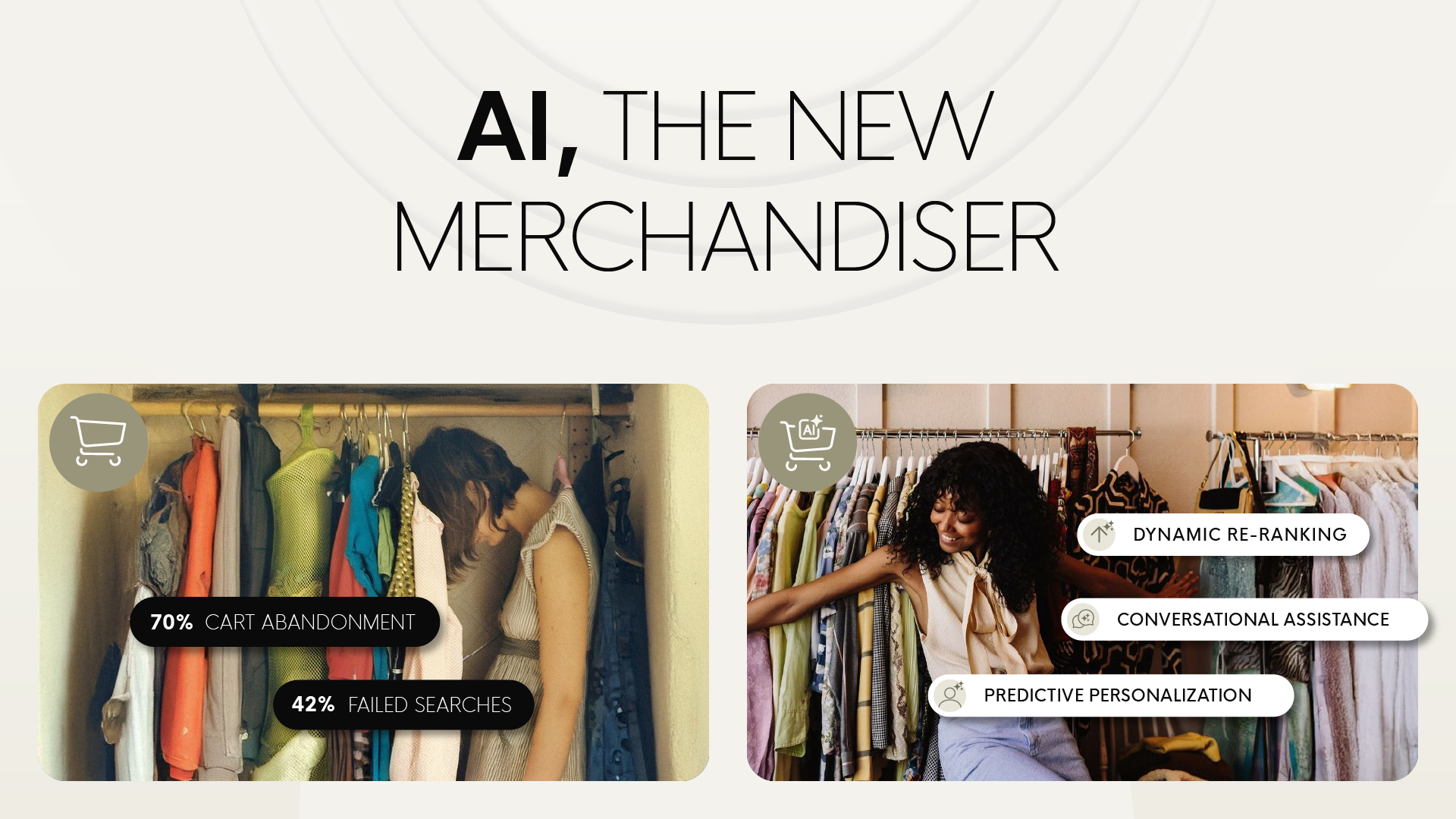
AI, the new merchandiser
Faced with these challenges, artificial intelligence is emerging as a decisive lever. Three main axes stand out.
Dynamic re-ranking. The order of results adjusts automatically based on real-time signals, clicks, conversion rates, purchase history. On Vinted, the same keyword can yield two entirely different rankings for two different users. The algorithm is designed to maximize the probability of both click and sale.
Conversational assistance. Inspired by ChatGPT-like usage, it allows the user to express needs in natural language (“I’m looking for a long but lightweight jacket for autumn”). The RealReal is already testing such interfaces, while B2B providers like Algolia and Coveo are developing these “semantic” engines.
Predictive personalization. Tools such as Attraqt, Nosto or Dynamic Yield reshape pages according to the customer profile. A client browsing for luxury handbags will not see the same homepage as a young man searching for limited-edition sneakers. In resale, “the search engine becomes the true salesperson.”

The B2B solutions at play
An entire SaaS ecosystem has emerged to tackle this challenge:
Algolia, Klevu, Coveo: e-commerce search engines, able to handle synonyms, typos, and natural language.
Crossing Minds, Attraqt: platforms specializing in product recommendation powered by machine learning.
Nosto, AB Tasty, Dynamic Yield: personalization and A/B testing tools to optimize conversion.
Applied to secondhand, these tools become vital. A poor search engine on an assortment of 50,000 unique items can cut conversion rates in half. Conversely, a well-tuned system increases time spent, reduces cart abandonment, and drives revenue growth.
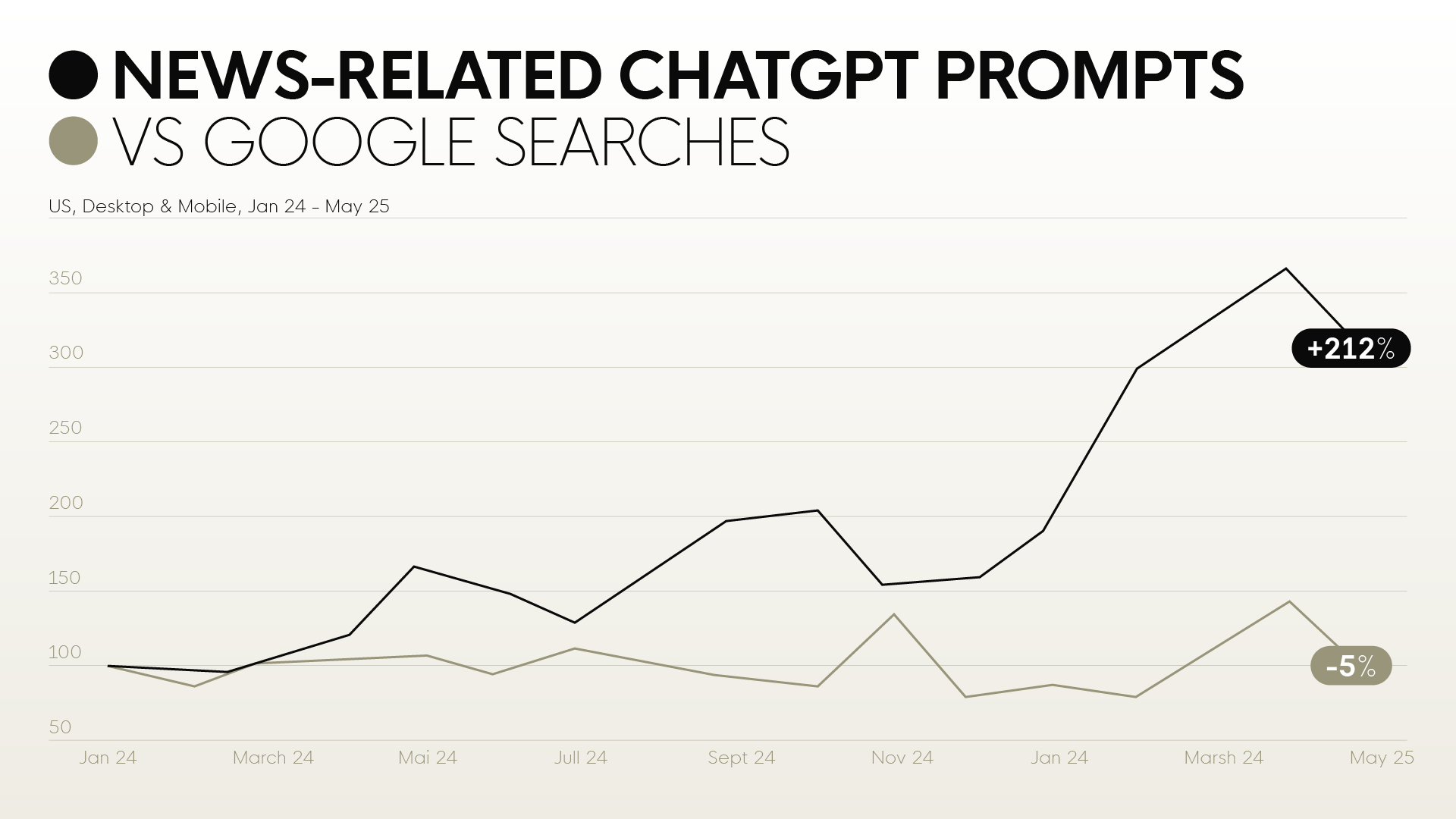
SEO vs GEO: the future storefront
Another silent upheaval is reshaping the landscape: SEO, once the cornerstone of e-commerce. Secondhand platforms have long thrived thanks to organic search. A Google query like “black Sandro dress secondhand” would lead straight to a product page. But tomorrow, with the rise of conversational engines, the rules change. Searches become more complex – “Find me a Sandro dress in size 38, under €150” – and the storefront looks very different. AI assistants don’t display a page of results; they point to a single answer. In this new framework, performance no longer depends on classic SEO but on GEO: Generative Engine Optimization.
Two trajectories are emerging. In the first, editorialized pages disappear and each product listing stands on its own, indexed and surfaced directly by AI. In the second, more hybrid model, product listings dominate but editorial still plays a key role: inspiring, narrating the brand, and building loyalty. In both cases, the implications for fashion are significant. Structuring data—sizes, materials, condition, price, sustainability—becomes as strategic as the quality of a photoshoot. Editorial is no longer a tool for acquisition but a lever for reassurance and brand equity.
Some initiatives already bring this future to life. Stripe recently partnered with OpenAI to enable direct purchases within ChatGPT: a user discovers a product, selects it, and checks out without leaving the conversation. For now, this functionality applies to Etsy sellers, soon extending to Shopify merchants. The entire system is built on a new open standard—the Agentic Commerce Protocol—co-developed by Stripe and OpenAI to make these experiences scalable. It marks a major step: e-commerce is no longer just a storefront, it becomes an interaction.
In a world where artificial intelligence filters and guides choices, differentiation will no longer rest on search rankings alone but on the quality of data and the strength of the brand.
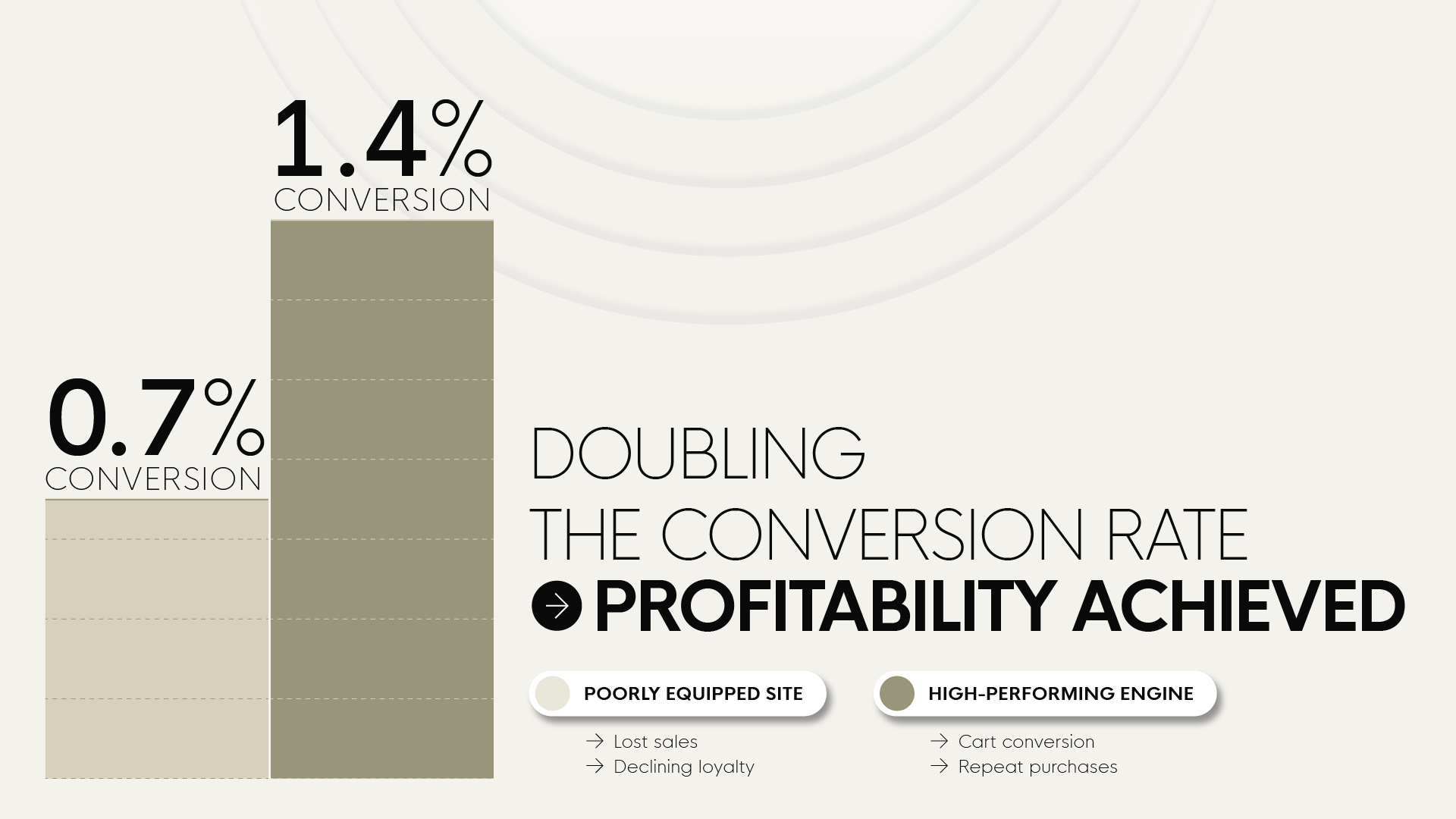
A strategic economic challenge
Merchandising in resale is not just a matter of UX—it’s an economic imperative. A poorly equipped site loses not only direct sales but also long-term customer loyalty. Conversely, a high-performing search engine combined with predictive personalization mechanically lifts conversion rates, average order values and repeat purchases.
In a segment where margins are thinner than in first-hand retail, the difference between a 0.7% conversion rate and 1.4% can determine the profitability of an entire program.
Fashion enters the era of intelligent engines
Resale is ushering in a new paradigm: merchandising built not around collections, but around data and AI. Brands that succeed in enriching product attributes, investing in intelligent engines and adapting their visibility to the conversational era will turn constraint into competitive edge.
In a world where every piece is unique, it is no longer stock depth that sets the standard, but the quality of the algorithm that reveals it.
Stay ahead of the game!
Sign up to FAUME's The Secondhand Review newsletter
Read inspiring stories from brands that have successfully launched their secondhand businesses with FAUME


